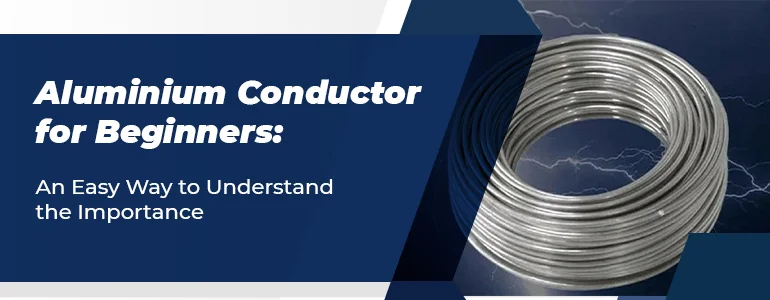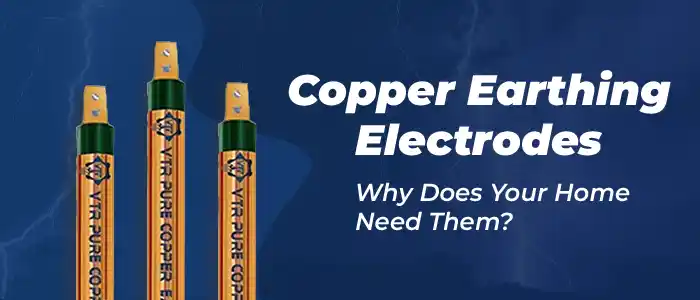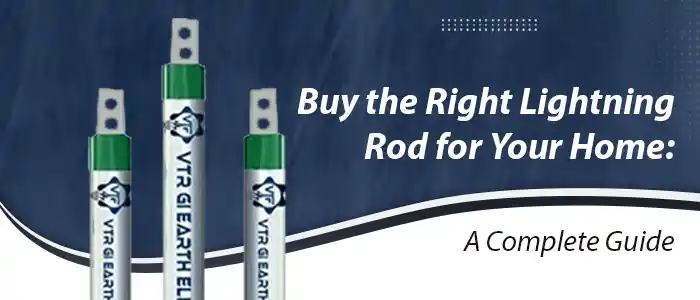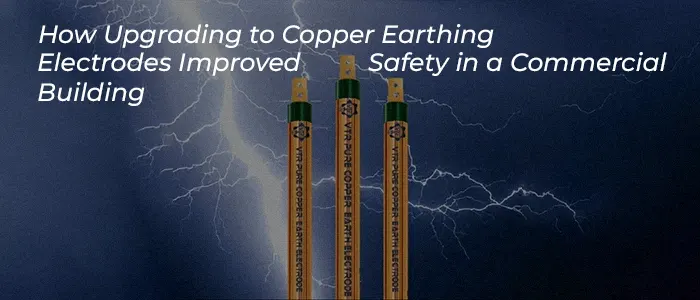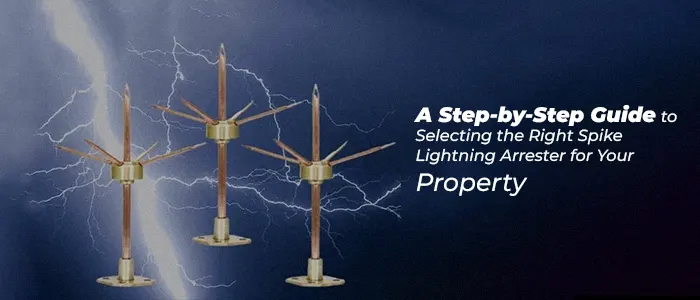What is an ESE Lightning Arrester and How Does It Work?
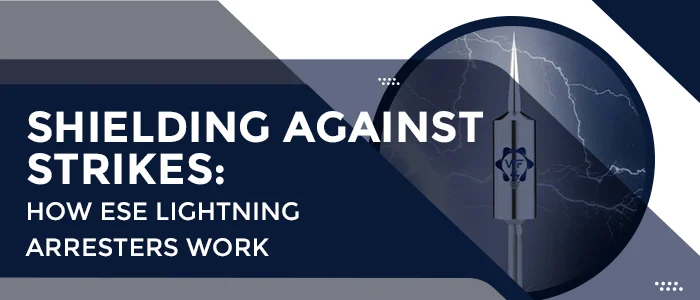
Introduction
A Lightning arrester is a device used to protect building structure and its surrounding area from the damage caused by lightning strikes. A lightning arrester intercept the lightning strike before it hit the structure, then guide it safely to the ground. It creates a path of low resistance for the lightning strike captured by it to reach the ground. Hence, it plays an important role in an earthing or grounding system when it comes to protecting the building structures from damage cause by lightning strikes.
Lightning arrester are of two main types–Conventional and ESE Lightning Arrester. Conventional lightning arrester passively attract the lightning and transmit into the ground wherein, ESE lightning arrester is an advance device that actively attracts the lightning by sending out special electrical signal that meet the lightning strike in the air before it lands on the protected area.
ESE Lightning arrester have become significant in today’s world due to its ability to protect a larger area with lesser installations. This makes it a cost-effective solution for numerous structures like industrial buildings, large open areas such as parks, commercial buildings etc. The latest technology of these arrester provides quick response time and better reliability making them the right choice for various infrastructural projects. Here, in this blog, we will learn about ESE Lightning Arrester, its feature and benefits over conventional lightning arrester and most important how this ESE lightning arrester actually works?
What is an ESE Lightning Arrester?
An Early Streamer Emission Lightning Arrester or an ESE Lightning Arrester is a sophisticated technology that protects building structure from the damage of lightning strikes. As the name suggests, an ESE lightning arrester emits a streamer in the air, that effectively capture the lightning strike before it could even hit the protected area and then transmitting it to the ground. These arresters have become a popular choice due to their superior performance and high reliability.
These lightning arresters come loaded with various features such as:
-
Modern Early Streamer Emission (ESE) technology that deliver superior lightning protection.
-
Provide larger area or radius of protection.
-
Crafted to endure harsh weather conditions.
-
Easy to install and maintain.
-
Made with finest material that provide durability and long lifespan.
-
Follow international safety protocols.
-
Prevent from any damage to structure or equipment could cause by lightning strike effectively.
How Does an ESE Lightning Arrester Work?
This whole ESE lightning arrester works using ESE or Early Streamer Emission mechanism. It is the core technology of this device and sets it apart from a conventional lightning arrester. Its significance lies in its ability to actively attract the lightning strike and capture it at a safe distance before it reaches the structure.
The tip of ESE Lightning Arrester is called air terminal. Under regular circumstances, this air terminal is not in use and remain inactive. But then a charged cloud is approaching, it creates a strong electric field around the area. The ESE Lightning Arrester sense this change in electric field and send high-voltage pulses from its tip. Being transformed by the pulses from this tip, the surrounding sir turns into ionized air, which is better at conducting electricity than normal air. This ionized air creates a pathway for lighting strike that guides it to the arrester and direct it safely to the ground through ESE type lightning Arrester.
Key Features and Significance of the ESE Mechanism:
Increased Protection Radius:
The early interception of lightning strike by ESE lightning arrester allows it to protect a larger radius of area than the conventional lightning arrester. The radius of protect though could differ, depending upon the efficiency of the ESE lightning protector and the height of installation, as they often leads to a larger protection radius of the area.
Enhanced Safety:
By capturing and discharging the lightning strike early, the ESE mechanism ensures that the lightning strike is directed to the ground safety without affecting the structure. This protects not only the structure but also the people.
Reliability in Extreme Conditions:
The ESE mechanism is made to work consistently even in the extreme weather condition such as strong wind or in areas with frequent lightning activities.
Cost-Effectiveness:
Due to wider protection area, fewer ESE lightning arresters are required to safeguard a larger area. This reduces the installation and maintenance cost as compared to conventional lightning arrester.
Early Upward Leader Formation:
The ESE mechanism send an upward streamer earlier than conventional arrester. This active behaviour discharge the lightning strike before it hit any vulnerable point and safeguard the structure without the risk of damage.
Difference Between Conventional and ESE Lightning Arresters
As we have learned above that ESE lightning arresters are more effective than conventional lightning arresters. Let us learn, what is the difference between conventional and ESE lightning arresters.
Mechanism:
Conventional lightning arrester works on passive approach that waits for the lightning strike to happen and then direct it to the ground.
ESE lightning arrester actively approach the lightning by sending high-voltage pulses using ESE mechanism and discharge the lightning to the ground.
Response time:
The response time of conventional arrester is slower, as it react after the lightning strike occurs.
ESE lightning arrester can intercept the lightning before it strikes. This leads to a faster response time and enhanced protection.
Protection radius:
In conventional lightning arrester, the protection radius is generally limited to the structure they are mounted on.
ESE lightning arrester covers a wider area of protection.
Cost-efficiency:
ESE lightning arresters are more expensive than conventional arresters, when it comes to initial cost. But due to better efficiency and requirement of fewer units, make ESE lightning arrester a more cost-effective solution in long-run.
Number of units:
Conventional arresters require quite a few units to protect a large expanse of area.
ESE lightning arrester require lesser units to protect the same. This make them a more efficient and cost-effective solution for wider area.
Technology:
Conventional Lightning Arrester are based on traditional designs.
ESE Lightning arrester utilize modern technology that provides quicker response time and better efficiency.
ESE Lightning Arrester Installation
The ESE Lightning Arrester Installation process is pretty simple. Let us learn how it is installed.
Installation Process:
Step1: Site Assessment
Conduct a thorough survey and identify the risk level of the area. Then, determine the highest point on the structure to be protected and check the surrounding area for any obstruction. Lastly, determine the appropriate placement for ESE lightning arrester for maximum coverage.
Step2: Material Selection
Choose an ESE lightning Arrester with appropriate protection radius and efficiency criteria. Now, select an appropriate mounting hardware, grounding conductor, and earthing electrodes.
Step3: Mounting the structure
Install the ESE lightning arrester at the highest point of the structure such as rooftop. Make sure you use a strong mounting hardware to ensure stability of the lightning arrester, especially in the areas prone to extreme weather condition.
Step4: Connect to the Ground Conductor
Install a high quality, low-resistance ground conductor attached from the arrester to the earthing system, to safely guide the lightning strike.
Step5: Setup the Grounding or Earthing System
Install the earthing electrodes to provide the lightning strike with a safe path to the ground. The grounding system is important to disperse the lightning energy safety into the ground.
Step6: Testing and Commissioning
Conduct an electric testing to ensure the conductivity of the system, its grounding efficiency and functionality.
Benefits of Using an ESE Lightning Arrester
There are various benefits of using an ESE lightning arrester over a conventional Lightning Arrester. Some these are:
-
Wider Radius of Protection:
ESE lightning Arrester has a wider area of protection than a conventional lightning arrester. It not only protects the structure but also the surrounding areas of the structure.
-
Early Interception:
An ESE lightning arrester detect the lightning strike early and intercept it into the ground before it could strike the structure. Since, the lightning strike is intercepted at a distance the risk of damage reduces significantly.
-
Cost-effectiveness:
ESE lightning arresters cover a larger area of protection and hence, require fewer units to protect a wide expanse of area. This significantly reduce the installation and maintenance cost of multiple units. Hence, making it a cost-effective solution.
Conclusion
ESE Lightning Arrester is a sophisticated solution that safeguard the building structure and surrounding areas. The cutting-edge technology, wider area of protection and cost-effectiveness make them a reliable choice for variety of applications. Using ESE mechanism, these arresters detect the lightning early and intercept it before it reach any vulnerable point. This provides an enhanced safety and log-term durability.
When it comes to choosing the right lightning protection solution, VTR Infotech stands out as the trusted provider of ESE Arrester and Lightning protection systems in India. VTR Infotech provide top-tier ESE Lightning Arrester that deliver superior performance and reliability by focusing on innovation and quality. Choose VTR Infotech to protect your structure smartly and efficiently.

